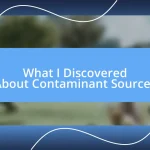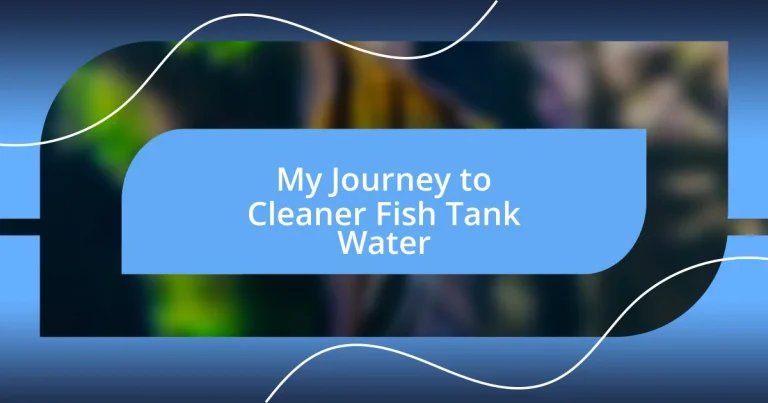Key takeaways:
- Understanding fish tank water quality parameters like pH, ammonia, and nitrates is vital for maintaining a healthy aquatic environment.
- Regular maintenance, including weekly water changes and cleaning filters, significantly improves water clarity and fish well-being.
- Utilizing natural remedies such as live plants and beneficial bacteria can enhance water quality and create a balanced ecosystem for fish and plants.
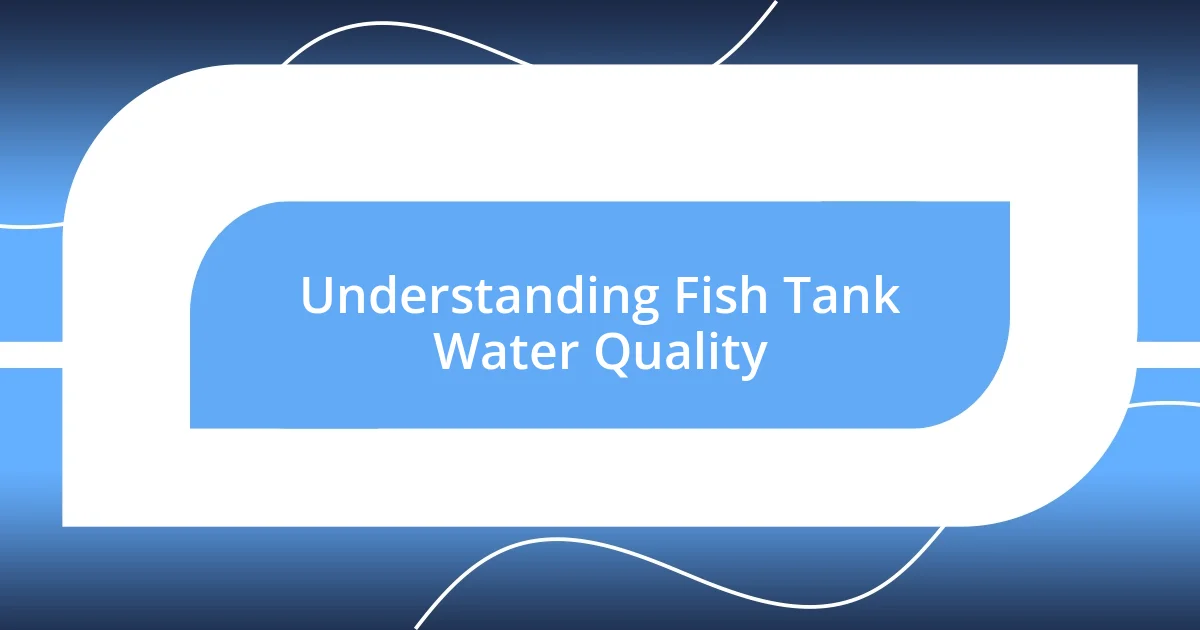
Understanding Fish Tank Water Quality
Understanding fish tank water quality is crucial for the health of your aquatic life. In my early days of fish keeping, I didn’t fully grasp the importance of parameters like pH, ammonia, and nitrate levels. I remember the panic I felt when I discovered my fish gasping at the surface; it was a wake-up call that made me realize that what’s invisible can genuinely impact their well-being.
Each parameter affects the overall balance of the tank. For example, high ammonia levels can be deadly, and I once lost several fish because I neglected regular testing. Have you ever tested your water and been surprised by the results? It definitely made me appreciate the delicate ecosystem within my tank.
Understanding water hardness is another piece of the puzzle. It took me a while to realize that too many minerals can lead to stress for certain species. Since then, I’ve found joy in learning how to tailor my water conditions for the specific needs of my fish, which has paid off with a thriving aquatic community.
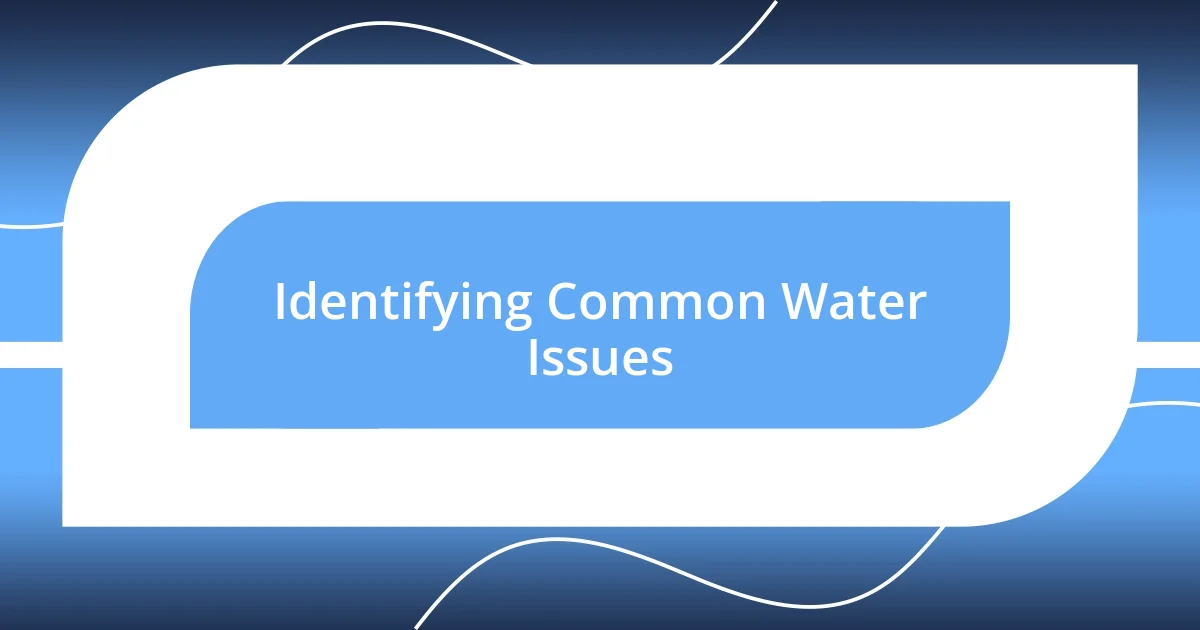
Identifying Common Water Issues
Once, I encountered an alarming issue when I noticed a greenish tint in my tank water. It turned out to be an algae bloom—a common sign that my tank was out of balance. Identifying problems like this is essential for maintaining a healthy environment. Regular testing and keen observation of changes in water clarity, odor, and color can provide critical hints about underlying issues.
Here are some common signs to look out for:
- Cloudy Water: Indicates a bacterial bloom or excessive nutrients.
- Green or Brown Tint: Often is a sign of algae growth due to high phosphate levels.
- Strong Odor: Could suggest decaying organic matter or poor filtration.
- Rapid Fish Behavior Changes: Gasping at the surface or hiding signifies anxiety and stress, often linked to water quality issues.
- Unexplained Fish Illness or Death: A red flag that something is seriously wrong with the water parameters.
Each of these indicators deserves prompt attention to prevent further complications. From my experience, being proactive with routine checks not only helps spot these issues early but can also save the lives of your fish.
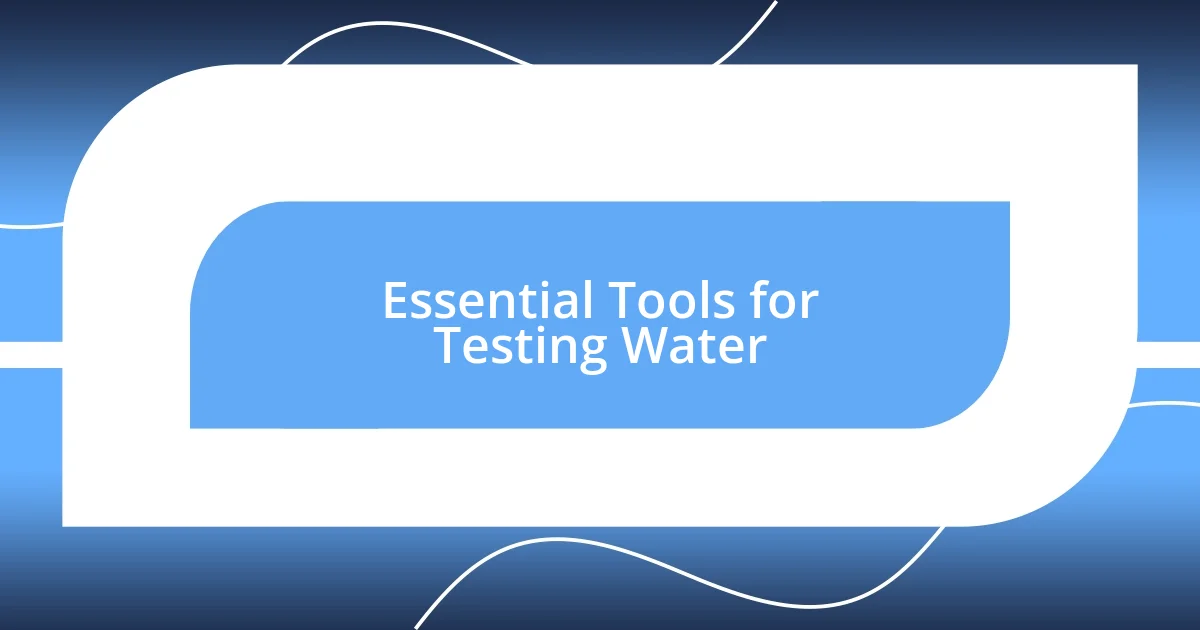
Essential Tools for Testing Water
When it comes to testing water in your fish tank, having the right tools is essential. In my experience, I found that a reliable water testing kit is my best friend. It allows me to monitor pH, ammonia, nitrite, and nitrate levels quickly and accurately. I remember the first time I tested my tank with a quality kit; the peace of mind it brought was a game-changer. That day, I realized I could take control of my tank’s health rather than leaving it to chance.
Another tool I frequently use is a TDS (Total Dissolved Solids) meter. This device gives me a quick reading of the general water quality. It amazed me how a simple number could reflect the overall balance of nutrients and contaminants in my tank. I’ll never forget the satisfaction I felt when I learned that my TDS levels were right where they should be—it made me feel like a true aquarist!
If you want to go the extra mile, a digital pH meter can be a fantastic investment. It provides precise readings compared to test strips, which can sometimes be tricky. I recall once, after switching to a digital meter, I was shocked at how different the pH reading was from what I thought it was. This experience taught me the importance of accuracy in maintaining a healthy environment for my fish.
| Testing Tool | Description |
|---|---|
| Water Testing Kit | Allows monitoring of crucial parameters like pH, ammonia, nitrite, and nitrate. |
| TDS Meter | Measures total dissolved solids, indicating overall water quality. |
| Digital pH Meter | Provides precise pH readings for accurate water management. |
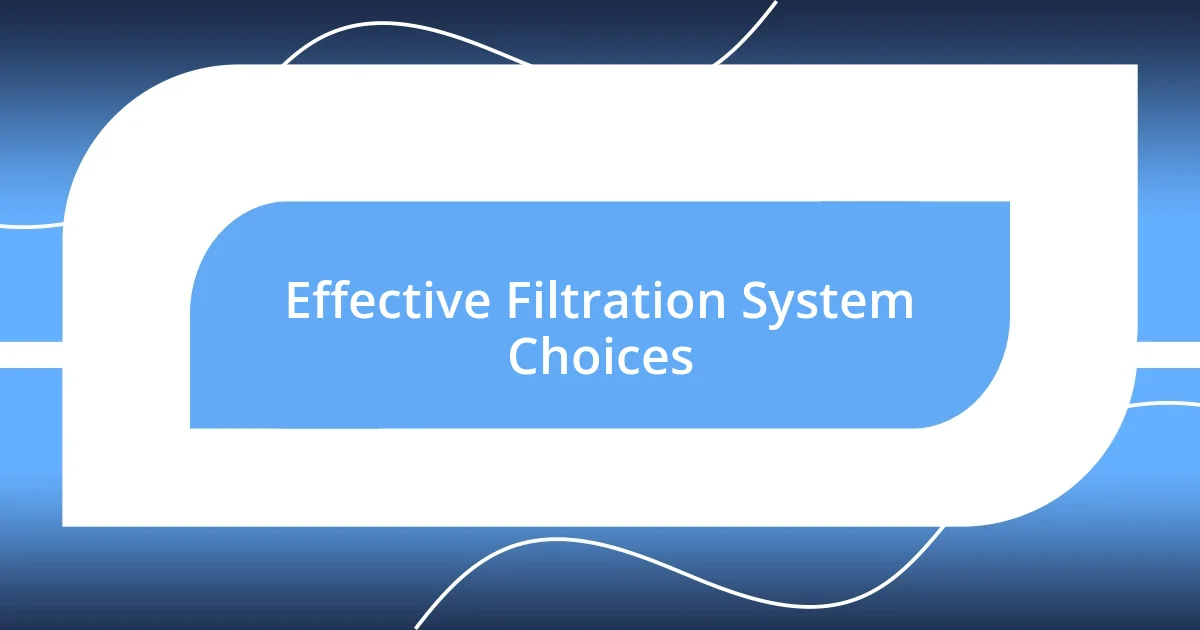
Effective Filtration System Choices
When it comes to filtering water effectively, choosing the right filtration system can transform your tank. Personally, I’ve experimented with both hang-on-back (HOB) filters and canister filters. While HOB filters are user-friendly and easy to maintain, I found canister filters to be superior in offering multi-stage filtration. The first time I switched to a canister filter, it was like night and day; my tank water was crystal clear, and I felt like a proud fish parent.
Another option worth considering is sponge filters, especially for smaller tanks or fry. Not only do they provide gentle filtration, which is essential for delicate fish, but they also offer biological filtration thanks to the beneficial bacteria that colonize them. I’ll never forget the relief I felt when I added a sponge filter to my tank and watched my fry thrive—there’s something incredibly satisfying about knowing you’re creating a nurturing environment for young fish.
Lastly, you might want to explore UV sterilizers, which can tackle algae blooms and harmful pathogens. I remember being skeptical about their effectiveness until I witnessed a dramatic change after installing one. The clarity of my water improved almost immediately, and it made me wonder—how many other aquarists were missing out on this incredible tool? If you’re serious about achieving a pristine aquarium, incorporating a UV sterilizer might just be your secret weapon.
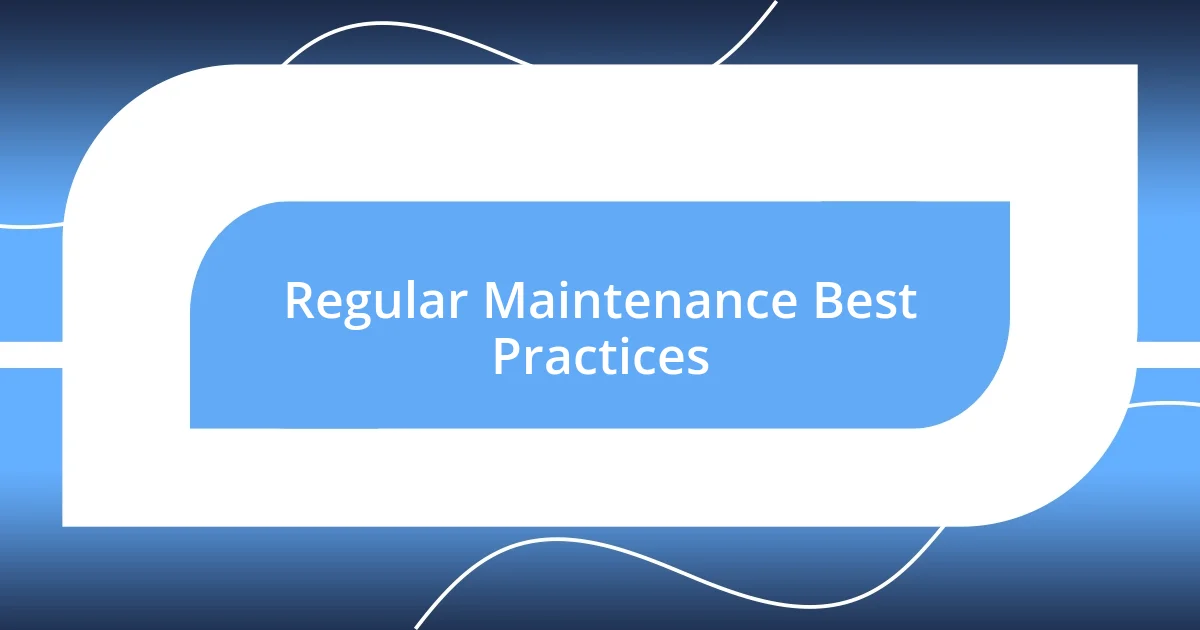
Regular Maintenance Best Practices
Regular maintenance is non-negotiable for sustaining clean fish tank water. From my perspective, performing weekly water changes is crucial. This simple task not only removes toxins but also replenishes essential minerals, keeping my fish vibrant and healthy. I remember the first time I noticed the difference; my fish were swimming more actively after a water change, and their colors looked more vivid. It’s incredible how a bit of routine can make such a significant impact!
Scrubbing the tank walls and decorations is another top practice. I’ve learned that algae buildup can happen faster than expected. The first time I neglected this task, my tank began to look like a jungle, and I felt a pang of regret when I saw how my fish were struggling to navigate through it. A gentle scrub once a month does wonders to keep the environment sparkling clean, making me feel like I’m truly caring for my aquatic friends.
Lastly, don’t underestimate the importance of checking and cleaning your filters regularly. I can’t tell you how relieved I was the first time I disassembled my filter for cleaning and found a layer of gunk that would have otherwise harmed my tank’s ecosystem. Regularly rinsing filter media helps maintain efficiency and enhances water clarity, ensuring that my fish can thrive. Why not take a moment to think about your own maintenance routine? You might just find an easy way to enhance your tank’s health!
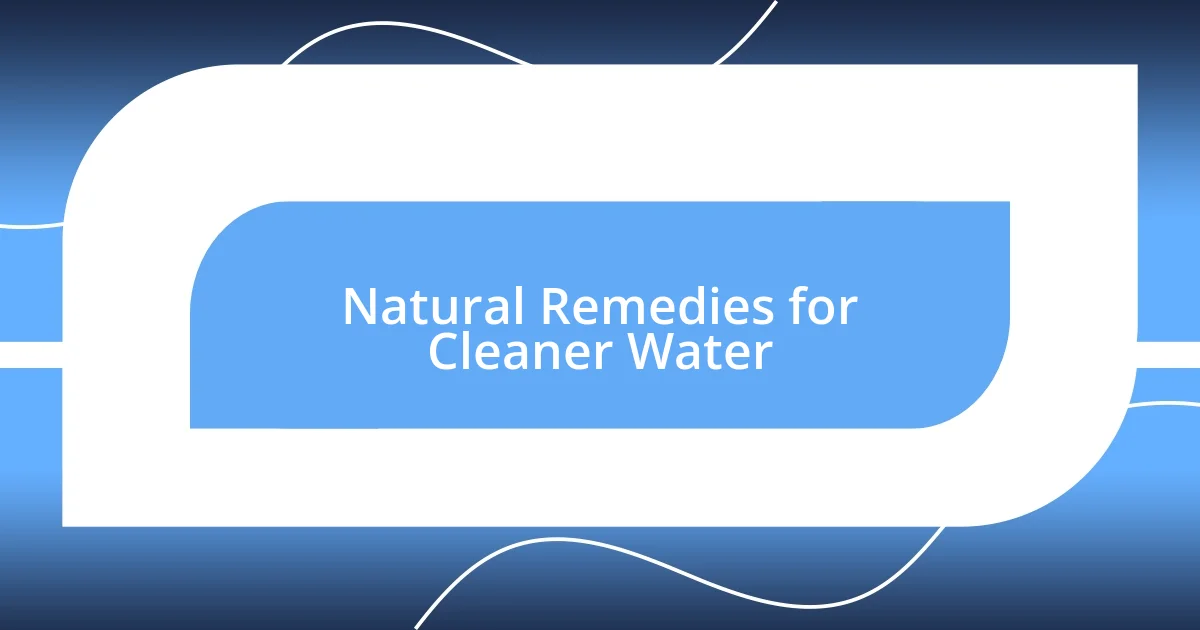
Natural Remedies for Cleaner Water
Natural remedies can be a game-changer for maintaining cleaner fish tank water. When I first learned about the benefits of using live plants, it truly opened my eyes. Not only do they look beautiful, but they also absorb excess nutrients and provide oxygen, creating a healthier environment for my fish. Watching them thrive among the greenery feels rewarding, like nurturing a little underwater paradise.
I’ve also found that adding certain natural additives, such as activated carbon or zeolite, can improve water quality. I remember my surprise when I first used activated carbon; the difference was astonishing! The water became remarkably clearer, and my fish seemed even more lively. Now, I wouldn’t consider a tank setup complete without these natural helpers. It’s almost like having an extra layer of protection for my aquatic companions.
Lastly, have you ever tried utilizing beneficial bacteria products? Initially, I was skeptical, wondering if they could truly make a difference. However, after introducing a beneficial bacteria supplement to my tank, I noticed a significant reduction in cloudiness and ammonia levels. This experience made me realize how vital a balanced ecosystem is for both fish and plants. Sometimes, the simplest solutions can be the most effective!
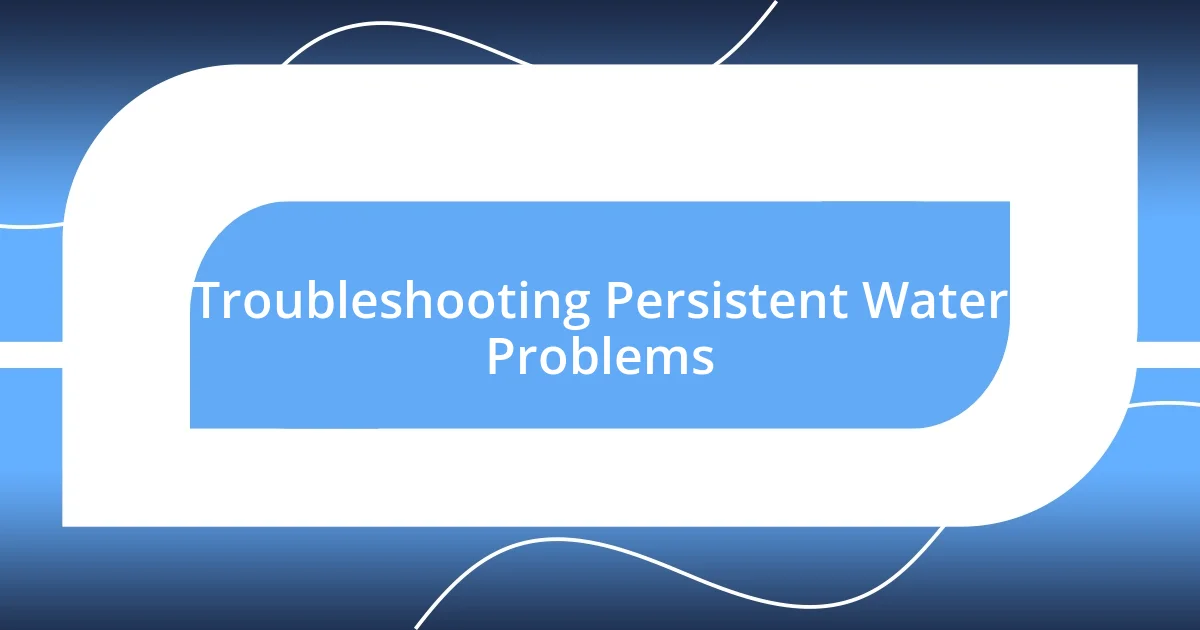
Troubleshooting Persistent Water Problems
When dealing with persistent water problems, it’s essential to pinpoint the underlying cause. I remember a particularly frustrating time when my tank water remained cloudy for weeks. After some investigation, I discovered an overabundance of fish waste and uneaten food at the bottom. Realizing this, I adjusted my feeding routine and did a thorough cleaning, which eventually cleared up the murkiness. Have you checked the waste levels in your aquarium lately?
Another common issue is fluctuating pH levels. I once faced dramatic swings that stressed my fish. After researching, I learned that stable pH is crucial for their wellbeing. So, I invested in a reliable pH kit and started monitoring daily, making gradual adjustments with buffers as necessary. Seeing my fish adapt beautifully to a stable environment was incredibly rewarding. Have you established a monitoring routine?
Lastly, don’t underestimate the impact of overstocking your tank. I made that mistake early on, anxious to add more species to my setup. When I saw my fish stressed and water quality deteriorating, I realized my tank was a bit too crowded. Reluctantly, I had to rehome a few fish, but it ultimately improved the overall health and happiness of the remaining ones. Sometimes, doing less truly brings more peace!

